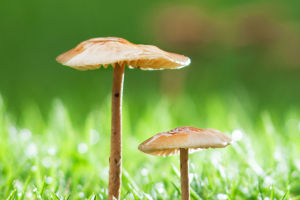Peonies are popular ornamental plants that are prized for their large, showy flowers and lush foliage.
However, with over 30 different species and countless cultivars, it can be challenging to distinguish between different types of peonies.
Let's explore the differences between tree peonies and herbaceous peonies, two of the most common types of peonies.
Herbaceous peonies are the most commonly grown type of peony and are known for their large, fragrant flowers that bloom in late spring or early summer.
These plants typically grow to a height of 2-3 feet and have dark green, glossy leaves that turn yellow in the fall.
Herbaceous peonies are herbaceous perennials, which means that their leaves and stems die back to the ground in the winter and regrow in the spring.
Tree peonies, on the other hand, are woody shrubs that grow up to 6 feet tall and have a longer blooming period than herbaceous peonies.
Their flowers are often larger and more colorful than those of herbaceous peonies, and they come in a wider range of colors, including red, pink, yellow, and white.
Tree peonies also have attractive foliage, with deep green leaves that stay on the plant throughout the growing season.
One of the easiest ways to distinguish between herbaceous and tree peonies is by their stems.
Herbaceous peonies have soft, herbaceous stems that are hollow and can be easily bent or broken, while tree peonies have woody stems that are harder and more rigid.
Another difference between the two types of peonies is their growth habit. Herbaceous peonies tend to grow in clumps, while tree peonies have a more open, branching habit.
Another key difference between herbaceous and tree peonies is their care requirements. Herbaceous peonies prefer well-drained soil and full sun but can tolerate partial shade.
They also require regular watering during the growing season and benefit from a layer of mulch around their base to help retain moisture.
Tree peonies prefer well-drained soil that is rich in organic matter and slightly acidic.
They also require full sun to bloom properly and should be watered regularly during the growing season.
In terms of propagation, herbaceous peonies are typically propagated by division, while tree peonies are usually propagated by grafting.
Herbaceous peonies can be divided in the fall or early spring by digging up the plant and carefully separating the clumps of roots.
Tree peonies are usually propagated by grafting a cutting from a desired cultivar onto a rootstock.
In conclusion, while both herbaceous and tree peonies are beautiful and popular ornamental plants, they have several key differences that can help distinguish between them.
Herbaceous peonies are herbaceous perennials with soft, hollow stems and grow in clumps, while tree peonies are woody shrubs with rigid, branching stems.
Herbaceous peonies prefer well-drained soil and full sun, while tree peonies require well-drained soil that is rich in organic matter and slightly acidic.
With these differences in mind, gardeners can choose the best type of peony to suit their needs and care for them properly to ensure they thrive in their garden.


